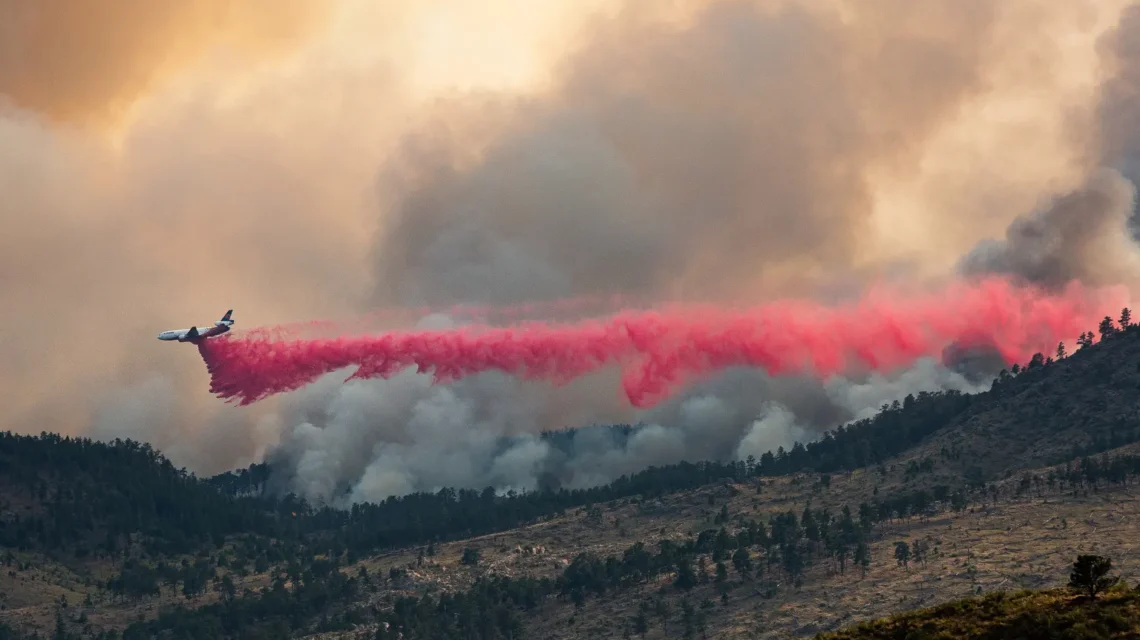Introduction to the Alexander Mountain Fire
The Alexander Mountain Fire can be described as something that dismantled everything within its reach be it the landscape or the communities. This ruthless fire ravaged through large swathes of forest, changing the environment forever while forcing many people who lived there to evacuate. With the powerful flames roaring in the air and lighting up the entire sky, people started realizing the extent of the fire and how bad it had the potential to become. The smoke quickly rose to a considerable height, an eternal reminder of the forces of nature.
In this blog post, we want to understand the relevant events in this case and how they acted in attempts to extinguish the flames. We shall consider the people it affected and the ecological destruction, which would probably someday in the future come back to haunt the affected. From aggressive containment strategies to holistic recovery plans for the affected, each dimension tells us about how the people overcame disaster. Today, the narrative centers on the Alexander Mountain Fire—how it continues to impact prospects long after theembers finish burning.
Table of Contents
The Cause of the Fire and Initial Response
The conditions for starting the fire were more than perfect. The first sparks emerged in the later afternoon, when the heat was already at its highest and strong winds intensified the flames. Investigators suspect human ignition.
Local volunteer fire departments acted vigorously as soon as the calls went in. Firefighters were on the scene with fire apparatus, irritating the urgency. It was not the time for self-pity; everything was at stake.
The first few actions were evacuation of the adjacent areas and protecting those that were most at risk. Residents were warned several times through loud speaker alarms even before they had to witness what was coming towards them.
While fighting team members were engrossed in extinguishing the fire, help for the evacuees was already in the works. Families fled their houses trying to find shelter amid a storm of chaotic uncertainties.
Impact on Local Communities and Environment
There was a severe damage done to the local communities from the Alexander Mountain Fire. People lost roofs over their heads and started their pretty much whole lives anew. Again, regular activities and day-to-day tasks were interrupted and the population lived in fear for a long period.
Local commerce also suffered a great blow as tourists averted places. The community’s economy was adverse as it spread to employment and business activities.
The landscape had received its share of burns from the fire as well. Wildlife homes were wiped out resulting in the displacement of innumerable pets. The forests which used to be full of alive sounds and sights remained blackened and empty.
After the rainfall the water bodies became contaminated from the ash pollution due to being bombarded with runoff, which disturbed a sustainable growth in the ecosystem. The land was fighting a battle keeping the nutrients essential for regrowth.
Community members came together to support each other. Some neighbors offered to house others, while some volunteers did their best to help the affected people. In the midst of destruction, there was a binding spirit which was common among the occupants with the aim of fighting the challenges which stood in front of them.
Containment Efforts and Challenges Faced by Firefighters
There were numerous difficulties that firefighters had to deal with during the control of the Alexander Mountain Fire. The overhead of the fire was difficult to control with mountainous terrain and shifting winds.
Different strategies were used by the firefighters to control the situation. They set up backfires to reduce the fuel available to the main fire ahead of time. They also employed aerial support to toss water from the air onto the hotspots that were difficult to reach.
To make matters worse, conditions changed very often. Severe hot spells and sudden wind gusts made the understanding of how the fire would behave in the next moments difficult. This unpredictability meant that crews had to move fast on the ground.
Not only that, but also access routes offered terrified logistical complications. Providing resources, such as food and gear required proper organization and very cautious planning due to time restraint.
In light of these issues, however, local agencies were able to cooperate efficiently with teams from the state and federal government. Their joint effort proved to be a successful pressure in a chaotic environment as they combined strategies in the fight against a constantly changing enemy.
Aftermath and Recovery Efforts
The Alexander Mountain fire aftermath affected the region’s environment as well as the surrounding community. charred trees blackened ground and_smoky skies stood as a sentinel to the forces of wrath that nature can unleash.
Efforts to restore order started in earnest as soon as it was clear the threat decreased. They rushed to evaluate damages and reestablish essential services. Roads were also opened to permit emergency vehicles to the areas where assistance was required.
Elders of the community said it was time to set the problem straight. Food, clothes, and even homes were provided to those who were affected by the fire. Fundraising campaigns were also held by many local NGOs to ensure families in distress are able to cope up with such emergencies.
Environmental restoration also had an important role for the recovery of the nation. The professionals aimed to repopulate the native vegetation which would mitigate soil erosion and sustain wildlife habitats.
Federal Agencies provided support grants which offered the means for the reconstruction of other infrastructures that had been ruined during the fire. This integrated strategy was not only aimed at recuperation but also provision for protection against the possibilities of a wildfire occurring again.
Lessons Learned from the Alexander Mountain Fire
The danger of the degree which people lack education to prepare for such events like wildfire such as in the Alexander Mountain Fire in the Alexander region of the state of California was among the key issues that were elucidated through the disaster. This was elaborated as harm was caused due to the lack of response mechanisms by most of the communities.
Local agency cooperation proved necessary. It was important to share information at an early stage because it avoided confusion during an early response.
Raising public awareness was another key message for us. Sometimes evidence suggests that if people are educated on normal fire risks, then fire occurrences can be limited. Taking part of the community in efforts to reduce the chance for future fire events makes the community strong.
So did technology support the management of the fire in terms of how far the fire had reached and damage assessment after the event. Improving the technology this way should indeed increase effective first-response times to future such events.
It is fairly easy in the future to point out areas that need restoration. The disaster for example drew attention towards the fact that nature in the form of ecosystesm should be conserved not only for aesthetic purposes but also because their presence serves to decrease fire outbreaks and therby dato human and animal life.
Conclusion: Preparing for Future Wildfires
The danger of the degree which people lack education to prepare for such events like wildfire such as in the Alexander Mountain Fire in the Alexander region of the state of California was among the key issues that were elucidated through the disaster. This was elaborated as harm was caused due to the lack of response mechanisms by most of the communities.
Local agency cooperation proved necessary. It was important to share information at an early stage because it avoided confusion during an early response.
Raising public awareness was another key message for us. Sometimes evidence suggests that if people are educated on normal fire risks, then fire occurrences can be limited. Taking part of the community in efforts to reduce the chance for future fire events makes the community strong.
So did technology support the management of the fire in terms of how far the fire had reached and damage assessment after the event. Improving the technology this way should indeed increase effective first-response times to future such events.
It is fairly easy in the future to point out areas that need restoration. The disaster for example drew attention towards the fact that nature in the form of ecosystesm should be conserved not only for aesthetic purposes but also because their presence serves to decrease fire outbreaks and therby dato human and animal life.


 Otelia Cox: Celebrating the Life of a Remarkable Individual
Otelia Cox: Celebrating the Life of a Remarkable Individual  Shemle Star DB: Unlocking the Potential of Database Solutions
Shemle Star DB: Unlocking the Potential of Database Solutions  Coomer Party: Unveiling the Buzz and the Stories Behind It
Coomer Party: Unveiling the Buzz and the Stories Behind It  Seargeoh Stallone: A Look at His Journey and Family Legacy
Seargeoh Stallone: A Look at His Journey and Family Legacy  Xmegle: Explore Unique Connections and Chat Experiences
Xmegle: Explore Unique Connections and Chat Experiences  JobDirecto: Your Go-To Platform for Exciting Job Opportunities
JobDirecto: Your Go-To Platform for Exciting Job Opportunities